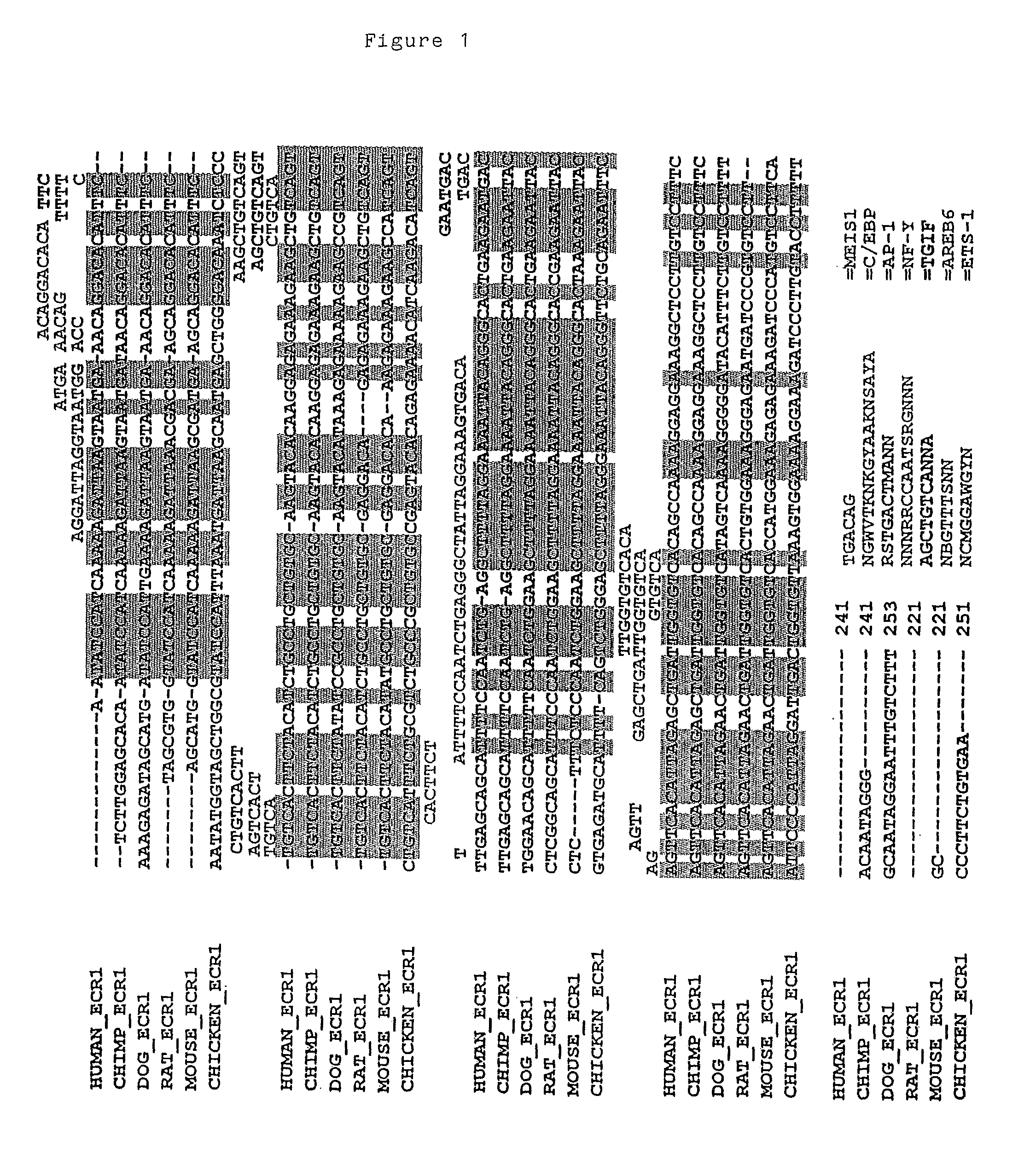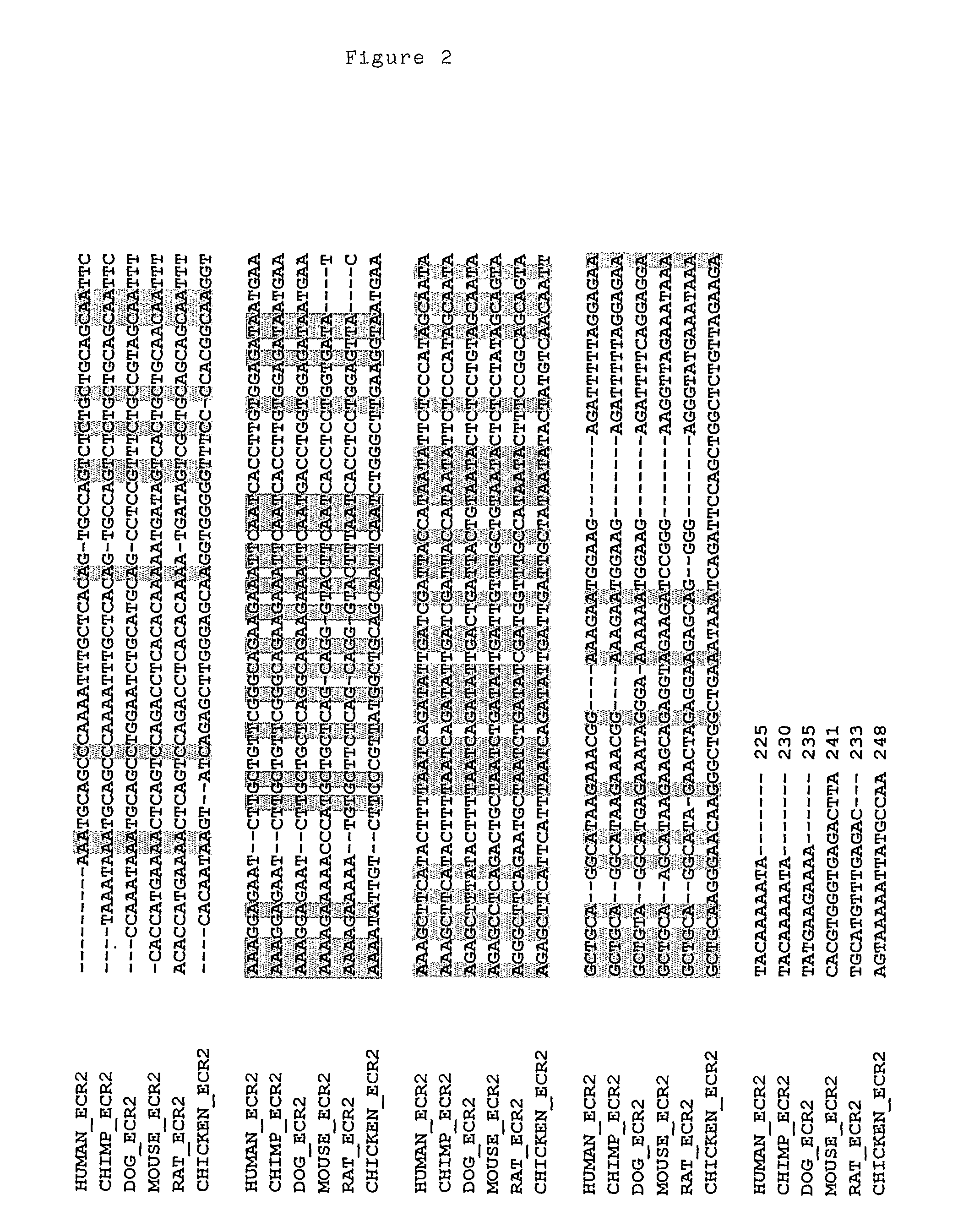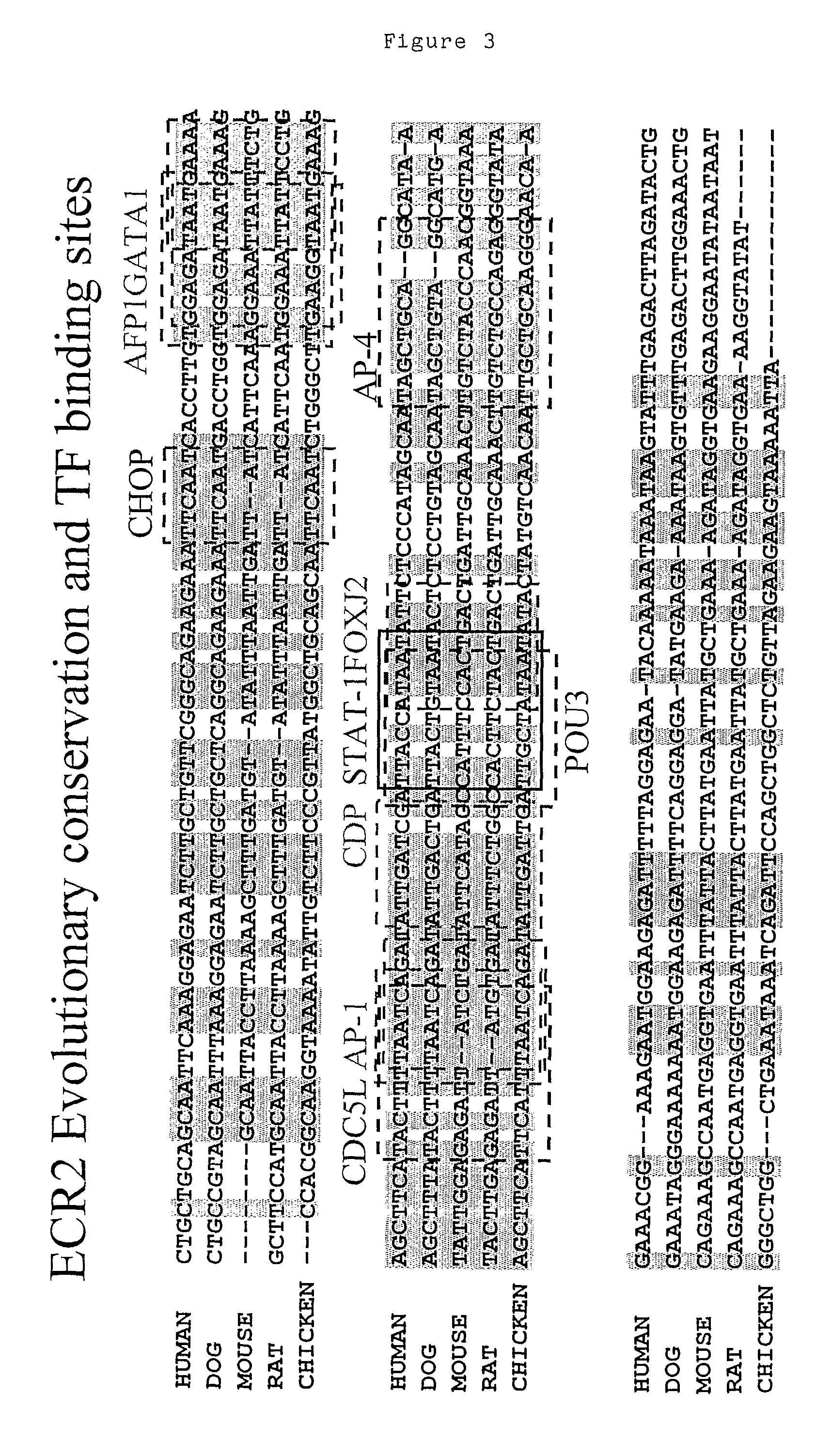Preprotachykinin Enhancer Elements
a transcription enhancer and protachykinin technology, applied in the field of tissue specific transcription enhancers, can solve the problems of high levels of conserved genomics and inability to compare restricted mammalian species, and achieve the effect of reducing painful inflammatory symptoms
- Summary
- Abstract
- Description
- Claims
- Application Information
AI Technical Summary
Benefits of technology
Problems solved by technology
Method used
Image
Examples
example 1
Comparative Analysis of Mammalian Genomes
[0126]We have previously demonstrated using transgenic analysis of a 380 kb YAC construct containing the PPTA gene fused to a LacZ reporter, that the elements required for expression of the PPTA gene in neuronal tissues, that include the amygdala, lay within 140 kb 3′ or 240 kb 5′ of the PPTA transcriptional start site (MacKenzie et al., 2000; MacKenzie and Quinn, 2002).
[0127]In order to determine the locations and identity of the enhancers responsible for driving expression of the PPTA gene in the amygdala within this 380 kb we carried out genome comparisons using the ECR browser (Ovcharenko et al., 2004) set to detect regions of significant conservation between chicken, mouse, rat, dog and human genome sequences surrounding the PPTA gene. Comparing mammalian sequence alone led to the identification of upwards of 40 identifiable peaks of genome homology (greater that 70% over 100 bp) within the 380 kb of the human genome contained within the...
example 2
Chicken-Human Genome Comparisons
[0128]Comparative analysis of 380 kb of the human and chicken genome corresponding to the sequence contained within the previously analysed 380 kb PPTA containing YAC construct previously analysed (MacKenzie et al., 2000; MacKenzie and Quinn, 2002) succeeded in revealing two evolutionary conserved regions (ECR) of significant conservation within 240 kb 5′ of the PPTA gene.
[0129]The closest sequence to the PPTA locus, evolutionary conserved region 1 (ECR1) exhibited 74% sequence conservation over 217 base pairs between chicken and human and was located 180 kb 5′ of the human PPTA gene transcriptional start site (FIG. 1).
[0130]The second sequence, ECR2, exhibited 68% conserved over 184 base pairs and was located 216 kb 5′ from the PPTA transcriptional start site (FIG. 2).
[0131]The persistent cis-linkage of these remote and highly conserved sequences with the PPTA gene, despite 310 million years of evolutionary divergence (Wallis et al., 2004) and strong...
example 3
Transgenic Analysis of ECR1
[0132]We used high fidelity PCR to isolate the human ECR1 sequence and cloned it into a plasmid containing the bacterial LacZ marker gene linked to the human β-globin promoter (p1230) to form pECR1-hβg-LacZ. Linearised pECR1-hβg-LacZ plasmid was micro-injected into 1 cell mouse embryos to generate pECR1-hβg-LacZ transgenic lines.
[0133]Three pECR1-hβg-LacZ transgenic lines that we analysed by whole mount LacZ staining and vibratome sectioning demonstrated a strong and consistent LacZ staining pattern within cells of an area of the brain that co-responded to the medial amygdaloid nucleus. LacZ staining was also detected within the central amygdaloid nucleus and could also be detected within parts of the thalamus corresponding to the zona incerta and a restricted population of cells within the caudate putamen. These areas of the amygdala are entirely consistent with the previously described locations of PPTA expression (Sergeyev et al., 2005), localisation of...
PUM
| Property | Measurement | Unit |
|---|---|---|
| Tm | aaaaa | aaaaa |
| volume | aaaaa | aaaaa |
| nucleic acid | aaaaa | aaaaa |
Abstract
Description
Claims
Application Information
 Login to View More
Login to View More - R&D
- Intellectual Property
- Life Sciences
- Materials
- Tech Scout
- Unparalleled Data Quality
- Higher Quality Content
- 60% Fewer Hallucinations
Browse by: Latest US Patents, China's latest patents, Technical Efficacy Thesaurus, Application Domain, Technology Topic, Popular Technical Reports.
© 2025 PatSnap. All rights reserved.Legal|Privacy policy|Modern Slavery Act Transparency Statement|Sitemap|About US| Contact US: help@patsnap.com



